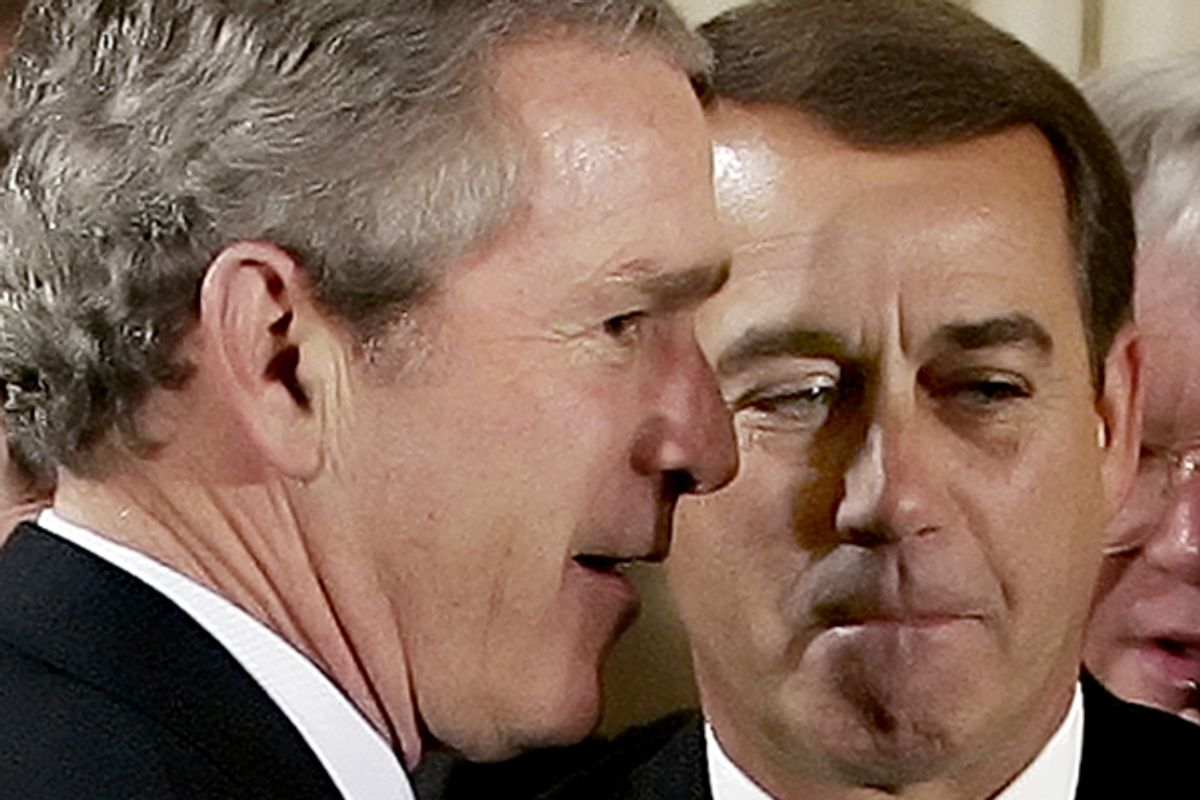One of the key policy issues Congress will have to deal with in this election year is how to head off the looming “fiscal cliff” -- the expiration of a number of key economic policies in January, including the Bush tax cuts. President Obama and congressional Democrats want to extend the Bush tax cuts for just middle- and working-class Americans, and let the breaks for the wealthy expire (though there’s some disagreement about where to draw that line). Congressional Republicans want to keep the whole lot.
So how many people would actually benefit from preserving the top-tier cuts? Just 1.9 percent of Americans, according to a new report from the nonpartisan Citizens for Tax Justice, which also broke down the impact of the policy on a state-by-state basis. In 22 states, even fewer people, just 1.5 percent -- would lose some tax benefits. Under the Republican approach, about 32 percent of the overall tax benefits would go to the top 1 percent of Americans, and nearly half would go to the top 5 percent. Under Obama’s approach, which would preserve the cuts only for families making less than $250,000 a year, those numbers are just 11.4 percent and 30.8 percent, respectively. And despite their talk of deficit control, the Republicans’ plan would cost almost $1 trillion more than Obama’s over 10 years.
Given that this is an election year, how might these different policies play out in key swing states? In Ohio, under the GOP plan, the rich would get a bigger tax break and the poor would get a smaller one than under Obama’s approach. Taxes for the top 1 percent of Ohioans would be cut by $49,550 on average per year under the GOP plan, and by just $19,870 on average under Obama’s approach -- a difference of almost $30,000. But the reverse is true for lower-income brackets. The poorest fifth of Ohio residents would see just $70 in savings under the GOP plan, but $210 in savings under Obama’s plan.
The effect is even bigger in Florida, where the richest 1 percent would save an additional $78,800 a year on average under the GOP plan, while the poorest fifth of the state’s residents would pay $210 more than under Obama’s plan. In Virginia, the top 1 percent would save an extra $52,720 a year on average under the GOP plan, while the bottom fifth would pay a $120 more than under Obama’s plan. In Colorado, the top 1 percent would save $67,080 and the poor would pay $160 more. In North Carolina, those figures would be $32,060 and $180. And in Pennsylvania, $47,630 and $100. The pattern holds true in Wisconsin, New Mexico, Missouri and every other state.
The results are perhaps not too surprising for anyone who has been following the Bush tax debate, but they underscore the parties’ competing visions for the economy. And the numbers could be fodder for Democrats who have been trying to paint the GOP and its presumed presidential nominee, Mitt Romney, as out of touch and only interested in helping the wealthy. (Romney has called for extending the Bush tax cuts for the wealthy and his own tax plan would disproportionately benefit the wealthy, including himself.)
Yesterday, Senate Democrats released a report showing that the House Republican budget authored by Budget Committee Chairman Paul Ryan would slash taxes on the wealthy and raise rates on the middle class. The findings were confirmed by outside analysts. Ryan’s budget probably has little hope of becoming law as long as Democrats control the Senate and White House. On the other hand, it’s very possible that all of the Bush tax cuts, including those for the wealthiest Americans, will be extended before they expire at the end of the year.

Shares